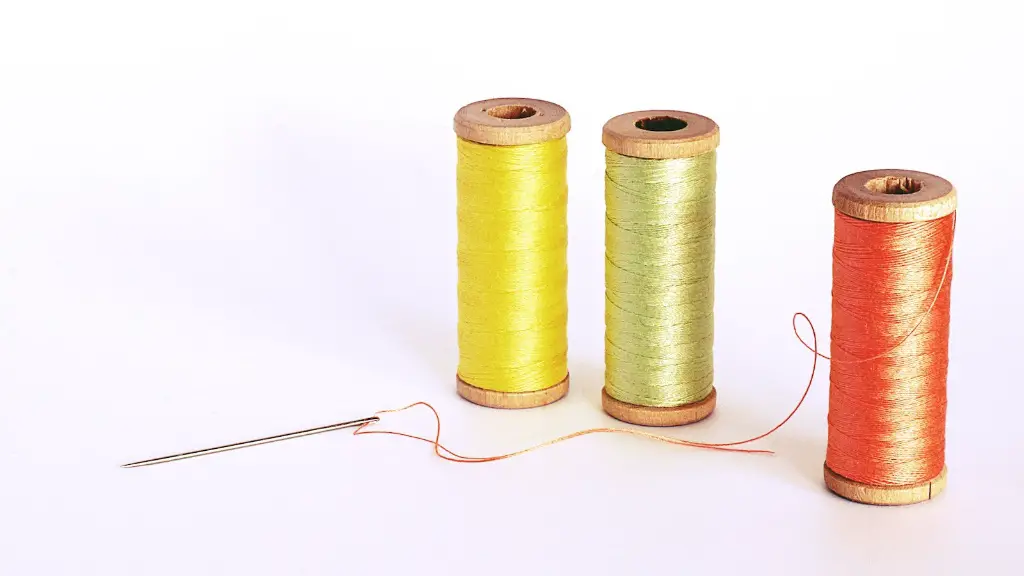Overview
Closing a pillow with a sewing machine might seem like a daunting task, but it doesn’t have to be. With the right materials and equipment, you can easily create a professionally fitted pillow with minimal effort. This guide will walk you through the process, from getting the materials and setting up your sewing machine, to stitches and final finishing touches.
Materials
The materials you need for a finished pillow vary depending on the type of pillow you’re working with. For a basic pillow, you will need fabric, batting (or stuffing), a sewing machine, and thread. If you’re making a complex pillow (for instance, one with ruffles or piping), you’ll also need notions like bias tape, trim, and piping. Additionally, for a professional-looking finish, you should use a zig-zag stitch or an overcast stitch.
Setting up the Sewing Machine
Before attempting to close a pillow, you should make sure your sewing machine is properly set up. Start by threading the thread into the bobbin before threading the needle. Make sure the tension on the sewing machine is correct–if it’s too tight, the thread may break, while if it’s too loose, the stitches may not be uniform. If you’re using an overcast stitch, make sure your machine is set up for an appropriate stitch length.
Sewing the Pillow
Now that the sewing machine is properly set up, you’re ready to sew the pillow. Depending on the type of pillow you’re making, you may need to use different stitches and techniques. For a basic pillow, start by sewing the side seams, then sew the end seams. Finally, to close the pillow, sew 4” over the opening. If you’re adding any trim or piping, you’ll need to sew the trim into the seams.
Finishing Touches
Once the pillow is sewn together, it’s time to add the finishing touches. If you’re using batting, you’ll need to turn it out and stuff the pillow. Use your hands or a pointed tool to push the batting into corners to give the pillow a finished look. Finally, turn the raw edges of the fabric under and sew the opening shut.
Stitches
The stitch you use when closing the pillow often depends on the type of fabric and the effect you’re going for. For a professional finish, you should use a zig-zag stitch or an overcast stitch. It’s important to use a good quality thread that matches the color of the fabric, as this will ensure the stitches are secure and won’t come undone.
Pillow Accessories
If you’re looking to add extra character to your pillows, you can add a variety of accessories. Ties, buttons, ruffles and piping are all popular options. These can be added when you’re sewing the pillow or afterwards. Tie closures, for example, can be added after the pillow is stuffed by sewing a button on the center of the pillow and then attaching ties to either side of the button.
Sizing
When measuring for a pillow, it’s important to get the measurements right. For a standard pillow, the measurements are 20” by 26”. If you’re making a large pillow, you’ll need a longer seam allowance for the zipper or closure. To make sure your pillow is the right size, measure from the center of the seam to the edge of the fabric and then add an extra 1” to the measurement. This will give you the correct size pillow.
Caring for Your Pillow
To ensure your pillows remain in prime condition, it’s important to take proper care of them. Regular checking for loose stitching and loose threads will help to prevent problems from arising. To extend the life of the pillow, make sure to spot clean or hand wash (only if the fabrics are specified as ‘washable’). Additionally, if the pillow is machine washable, use a delicate cycle and cool water.
Checking for Quality
When working with a sewing machine, it’s important to check the finished product for quality. Make sure the stitching is even and secure, and that the fabric is cut cleanly and evenly. Additionally, inspect the edges and edges of the fabric to make sure they are properly finished and that no raw edges are showing.
Workspace
Having a clean workspace is also important. Make sure to clean your sewing machine, scissors, needles and other tools before and after each use to ensure quality and precision in your work. Additionally, ensure you have adequate lighting so you can accurately see the fabric you’re working with.
Design
When it comes to designing pillows, the possibilities are endless. Fancier pillows can be customized with piping, appliques and trim. Additionally, custom fabrics, such as velvet or prints, can be used for a unique look. Don’t be afraid to experiment with different fabrics, textures, and colors to get the look you’re after.
Tools
When working with a sewing machine, you should use the proper tools to get the job done. Pins, seam rippers, and scissors are all important tools. Additionally, a ruler and a measuring tape are essential for accurate measuring. Finally, a thimble can be handy for working with thicker fabrics.
Machine Maintenance
Proper machine maintenance is essential for keeping your sewing machine in working order. After each use, make sure to clean out lint and debris that has accumulated in the bobbin case and around the feed dogs. Additionally, make sure to always use good quality thread in your machine to reduce the chances of thread breakage.
Disposal
It’s important to properly store or dispose of any old materials or tools when you’re done with the project. If you’re disposing of any fabric or tools, make sure to do so responsibly–recycling or donating them, where possible, is always a good option. Additionally, it’s a good idea to keep any fabrics, notions, and tools in a well marked storage container to avoid having to look for them each time you start a project.



